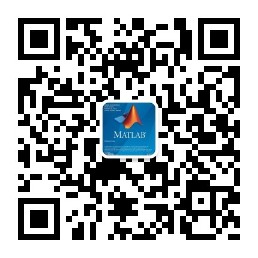博文
[转载]【无人机】【2020.04】无人机在马尼托巴省南部进行中型食肉动物和繁殖水禽调查中的应用
||
本文为美国路易斯安那州立大学(作者:Jacob Bushaw)的硕士论文,共67页。
无人驾驶飞行器(UAV)正成为野生动物调查的一个越来越重要的工具,为UAV配备热成像摄像机可以使这些调查更加有效。在我的论文中,研究了在马尼托巴省南部使用配备热成像相机的无人机进行中型食肉动物调查、寻找在水面上筑巢的鸭以及进行鸭窝调查的可行性。
为了我的第一个目标,使用无人机和热像仪进行了夜间中型食肉动物调查。使用了6个航路点的修正点计数调查,并在每个重复过程中调查了29.5公顷的范围。在53个晚上共进行了200次飞行,期间我发现了8种不同种类的32种中型食肉动物。无人机和热像仪在定位中型食肉动物方面很有效,但是考虑到中型食肉动物的大家庭范围,我的调查应该被认为是对最小丰度的估计,而不是人口普查。
对于我的第二个目标,进行了两部分的调查:1)相对于传统调查,我评估了无人机和热成像相机定位鸭巢的有效性;2)检验了技术人员访问鸭巢可能影响搜索率的假设。在我第一次学习的过程中,无人机共找到了47个技术人员没有找到的巢穴,然而,技术人员找到了164个无人机遗漏的巢穴,两种方法都找到了71个相同的巢穴。无人机监测的巢穴与技术人员监测的巢穴存活率没有差异。虽然无人机完成测量的速度比技术人员快,但由于无人机的探测率相对较低,这项技术的实用性受到限制。
我的第三个目标是评估使用无人机和热成像相机进行育雏调查的效果。2018年和2019年,无人机和热像仪共定位了1569只幼崽,而地面技术人员定位的是666只,探测率分别为0.48和0.20。无人机可靠地定位了两倍于地面技术人员的孵卵数量,完成调查的速度是地面技术人员的四倍,这表明这项技术对水禽生物学家有很大的实用价值。
Unmanned aerial vehicles (UAVs) are becoming an increasingly important tool for wildlife surveys and equipping UAVs with thermal imaging cameras could make these surveys even more effective. In my thesis I examined the feasibility of using a UAV equipped with a thermal imaging camera to conduct mesocarnivore surveys, search for duck nests built over water, and conduct duck brood surveys in southern Manitoba. For my first objective, I conducted nighttime mesocarnivore surveys with the UAV and thermal camera. I used a modified point-count survey from six waypoints and surveyed 29.5 ha in each replicate. I conducted a total of 200 flights over 53 survey nights during which I detected 32 mesocarnivores of eight different species. The UAV and thermal camera were effective at locating mesocarnivores, however given the large home ranges of mesocarnivores, my surveys should be considered estimates of minimum abundance and not a population census. For my second objective I conducted a two-part survey: 1) I evaluated the effectiveness of a UAV and thermal camera to locate duck nests relative to traditional surveys, and 2) tested the hypothesis that technician visits to nests may influence predation rates. Over the course of my 1 st study the UAV located a total of 47 nests that were not located by technicians, however, the technicians located 164 nests missed by the UAV, and both survey methods located 71 of the same nests. There was also no difference in survival rates for nests monitored with the UAV versus those monitored by technicians. Though the UAV completed surveys faster than technicians, the usefulness of this technology was limited, because the UAV has a relatively low detection rates. My third objective was to evaluate the efficacy of using a UAV and thermal camera to conduct brood surveys. In 2018 and 2019, the UAV and thermal camera located a total of 1569 broods, compared to 666 located by ground technicians, and had higher detection rates (0.48 vs. 0.20). The UAV reliably located twice as many broods as ground technicians and completed surveys four times faster, indicating this technology has great utility for waterfowl biologists.
1. 引言
2. 无人机在中型食肉动物调查中的应用
3. 无人机和热成像相机在水上鸭窝定位监测中的应用
4. 应用无人机和热成像相机进行鸭窝调查
5. 结论
更多精彩文章请关注公众号:
https://wap.sciencenet.cn/blog-69686-1277451.html
上一篇:[转载]【电信学】【2006.05】用于不确定定位的移动机器人导航工具与算法
下一篇:[转载]【信息技术】【2010】数字修复算法与评价